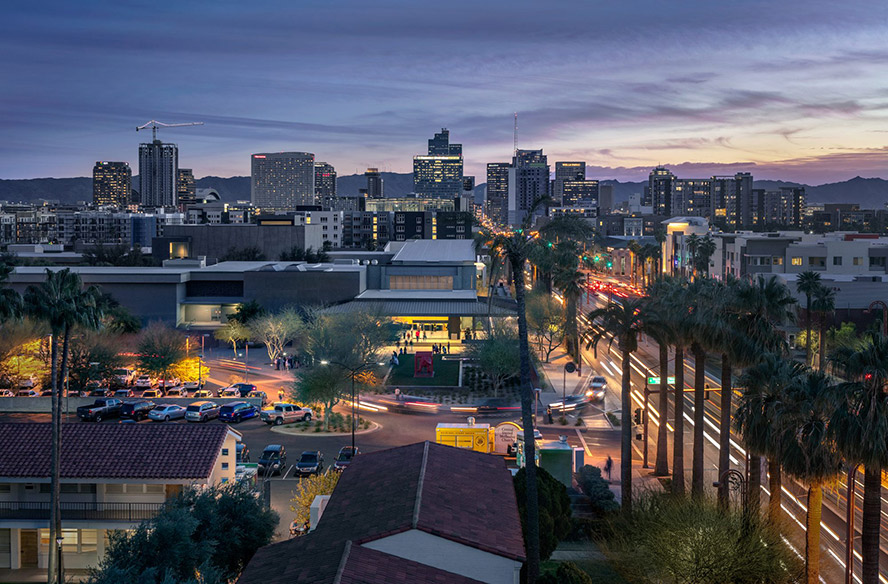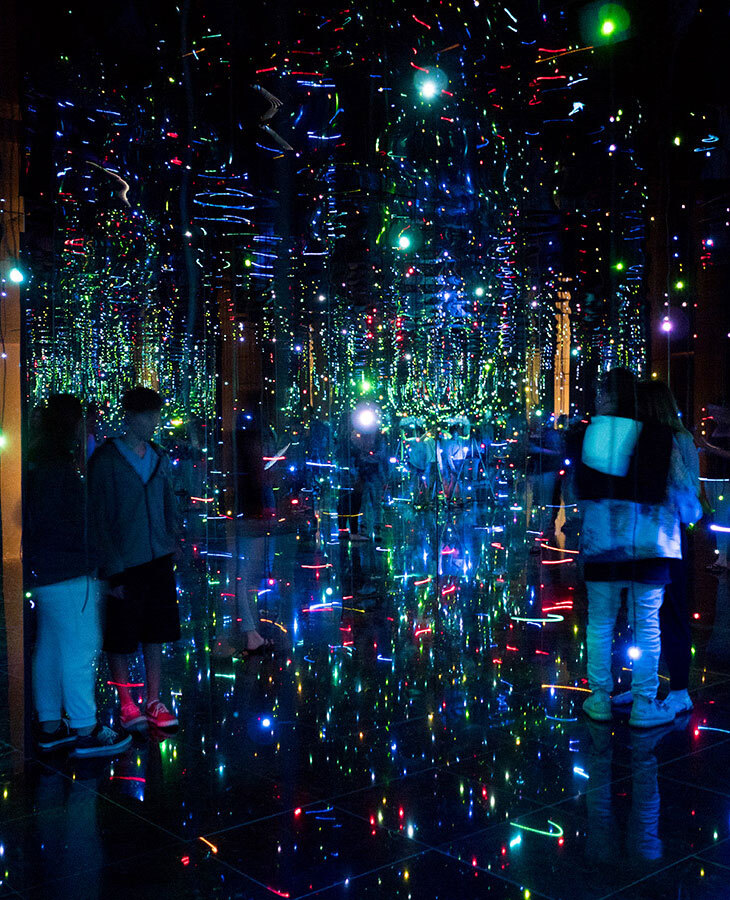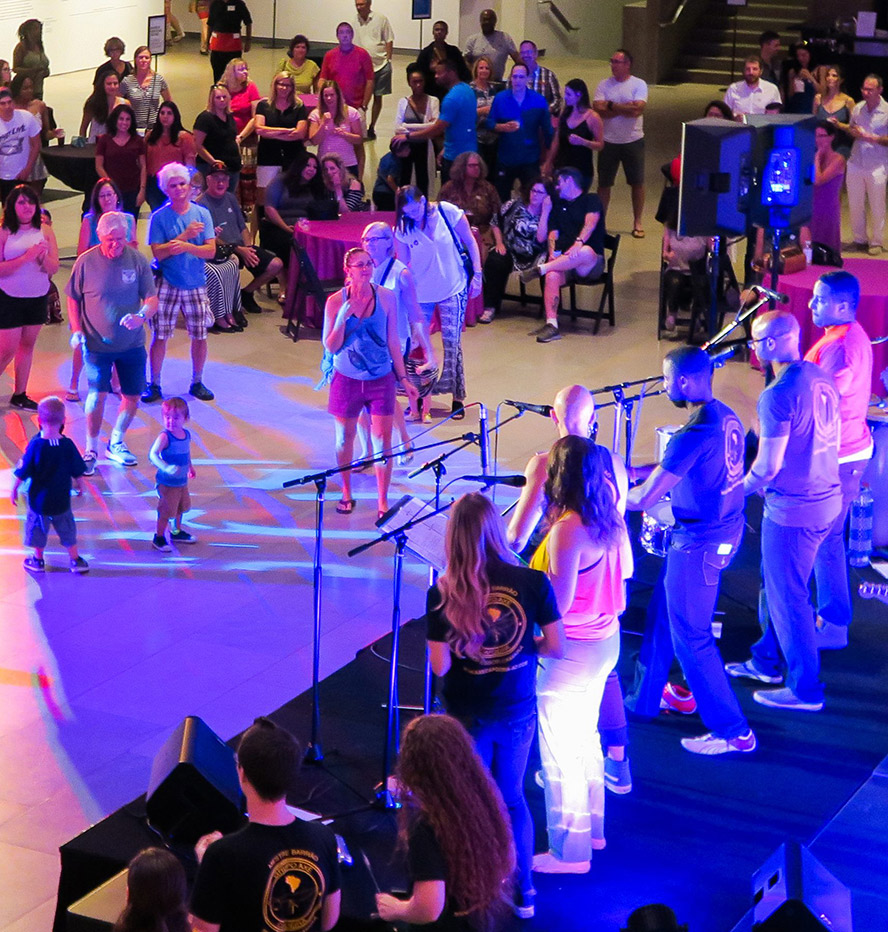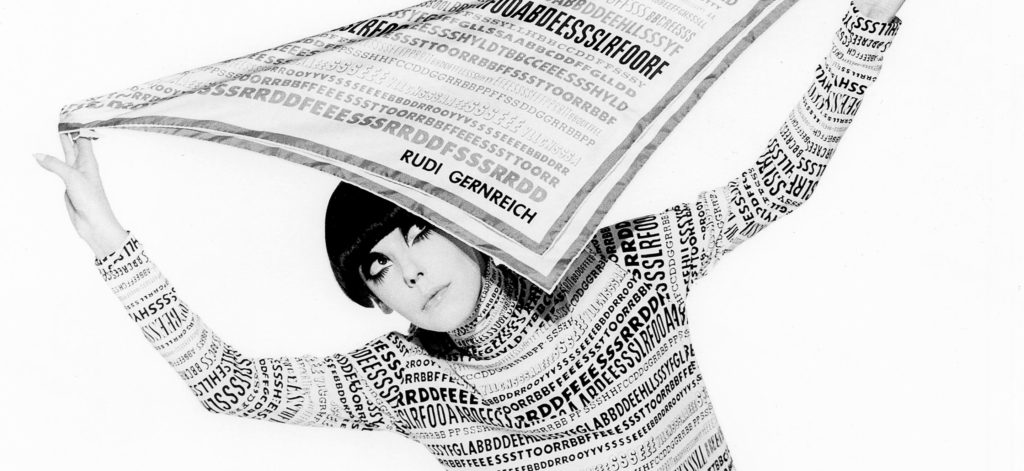Fearless Fashion: Rudi Gernreich is organized by the Skirball Cultural Center, Los Angeles. Its premiere at Phoenix Art Museum is made possible through the generosity of the Jacquie Dorrance Curator of Fashion Design Endowment, The Virginia M. Ullman Foundation, Lee and Mike Cohn, and The Arizona Republic | azcentral, with additional support from Arizona Costume Institute, and the Museum’s Circles of Support and Museum Members.
ABOUT THE EXHIBITION
Through more than 80 ensembles and a collection of original sketches, letters, personal papers, photographs, press clippings, and newly filmed oral histories, Fearless Fashion: Rudi Gernreich explores the significant social and cultural impact of the work of Rudolph “Rudi” Gernreich (1922–1985), the acclaimed designer best known for innovative and body-positive creations such as the “monokini” topless swimsuit, the thong, unisex clothing, and pantsuits for women. Organized by the Skirball Cultural Center, Los Angeles, the major fashion exhibition provides a broader understanding of the late designer’s life and how his work continues to influence fashion trends and current notions of beauty, gender, and identity.
Born in 1922 in Vienna, Austria, Gernreich, who was Jewish, fled Nazi oppression as a teen and immigrated to Los Angeles, where he continued to face discrimination. He eventually found safe haven in the performing arts community and the gay rights movement, which drove him to seek social change and promote a truer expression of self through fashion design. Gerneich was propelled to fame when he launched his “monokini” design. Throughout his career, he continued to create trailblazing designs that illustrated his dedication to inclusivity, non-conformity, and liberation.
Fearless Fashion is organized into seven sections that, together, chronicle Gernreich’s rise to prominence and underscore how his designs revolutionized the understanding of beauty in the fashion industry.
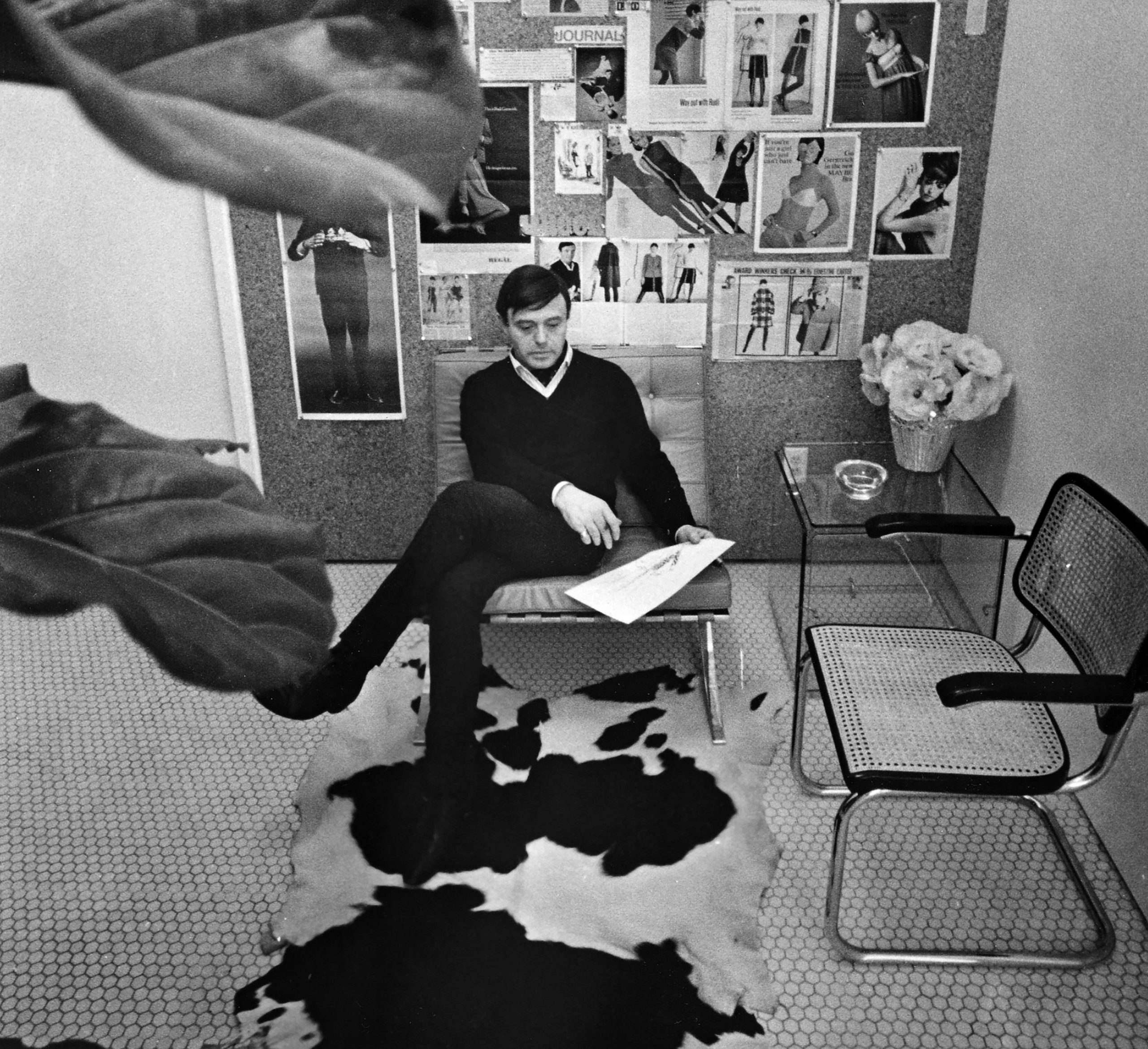
BECOMING RUDI GERNREICH
Becoming Rudi Gernreich follows the designer from his childhood in Vienna through his immigration to the United States in 1938. Visitors learn about Gernreich’s early experiences in Los Angeles, including his participation in the interracial Lester Horton Dance Theatre and his role as the second founding member of gay rights organization the Mattachine Society. This portion of the exhibition also highlights his first jobs in the fashion industry.
IMAGE CREDIT
Rudi Gernreich at his office in Los Angeles, 1966. Photograph © William Claxton, LLC, courtesy of Demont Photo Management & Fahey/Klein Gallery Los Angeles, with permission of the Rudi Gernreich trademark. (Top) Peggy Moffitt modeling ensemble designed by Rudi Gernreich, Fall 1968 collection. Photograph © William Claxton, LLC, courtesy of Demont Photo Management & Fahey/Klein Gallery Los Angeles, with permission of the Rudi Gernreich trademark.
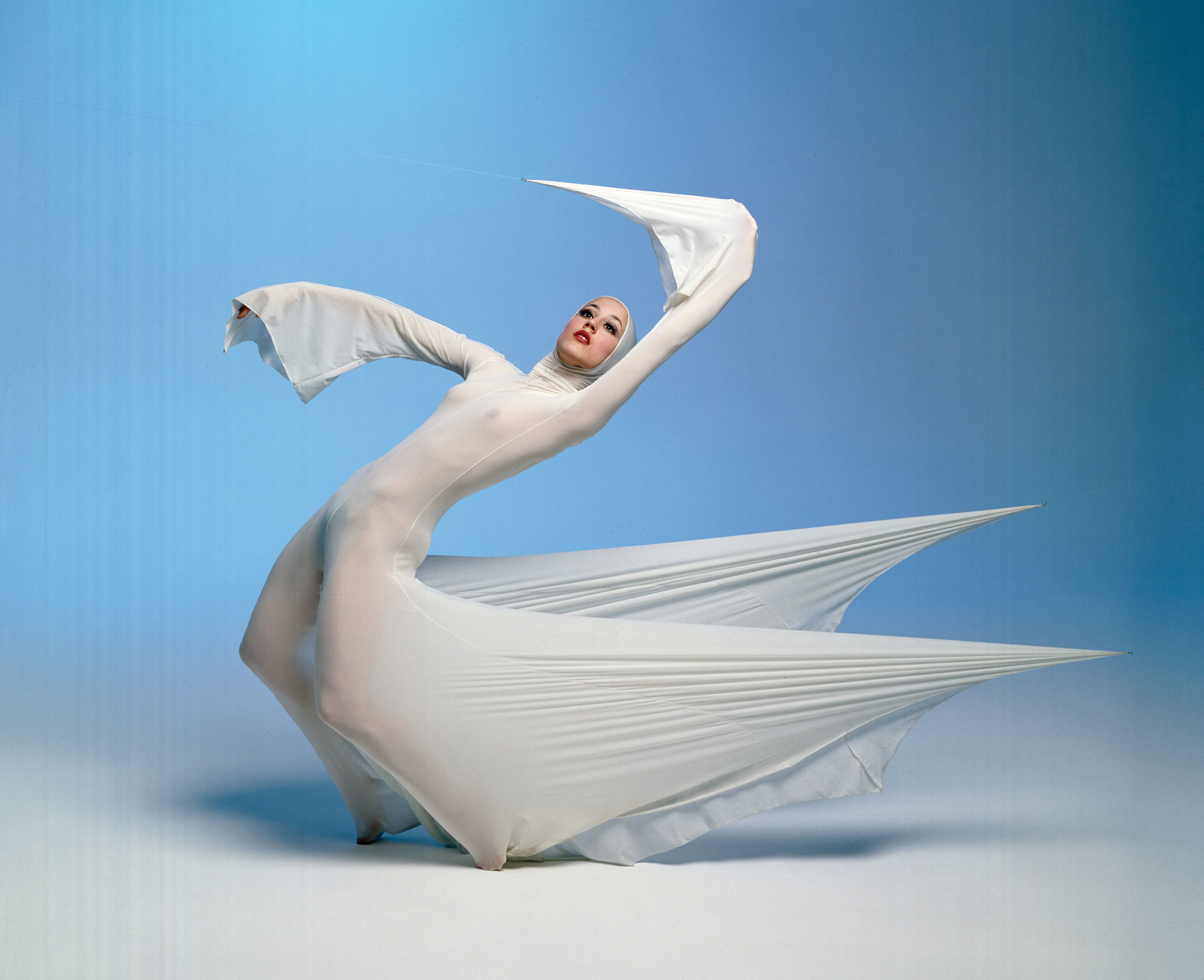
DANCE AND THEATER
Dance and Theater illuminates Gernreich’s interest in freedom of movement through the Swan and Duotard costumes he created for the Bella Lewitzky Dance Company performance Inscape. This section also features other theatrically inspired ensembles from throughout the designer’s career.
IMAGE CREDIT
Dancer Serena Richardson in costume designed by Rudi Gernreich for the Lewitzky Dance Company’s Inscape production, 1976. Photograph © Daniel Esgro.
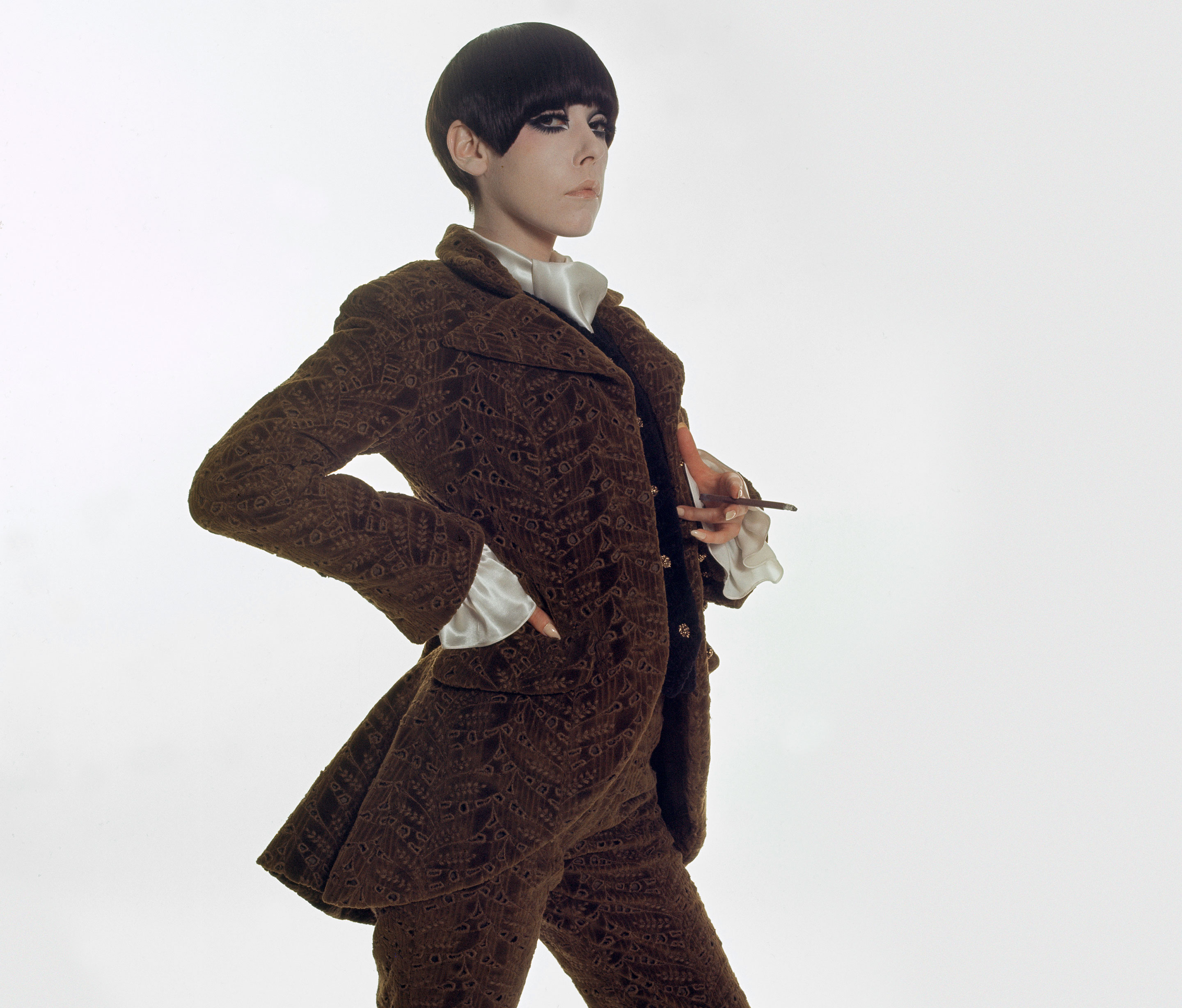
MINIS, MODS AND PANTSUITS
Minis, Mods and Pantsuits focuses on the 1960s and 1970s, exploring Gernreich’s support for second-wave feminism. Featured garments, such as the mod “micro-mini” skirt and the pantsuit for women—including his “Marlene Dietrich” and “George Sand” ensembles—challenged ideas of how women should dress and present themselves.
IMAGE CREDIT
Peggy Moffitt modeling George Sand pantsuit designed by Rudi Gernreich, Fall 1967 Collection. Photograph © William Claxton, LLC, courtesy of Demont Photo Management & Fahey/Klein Gallery Los Angeles, with permission of the Rudi Gernreich trademark.
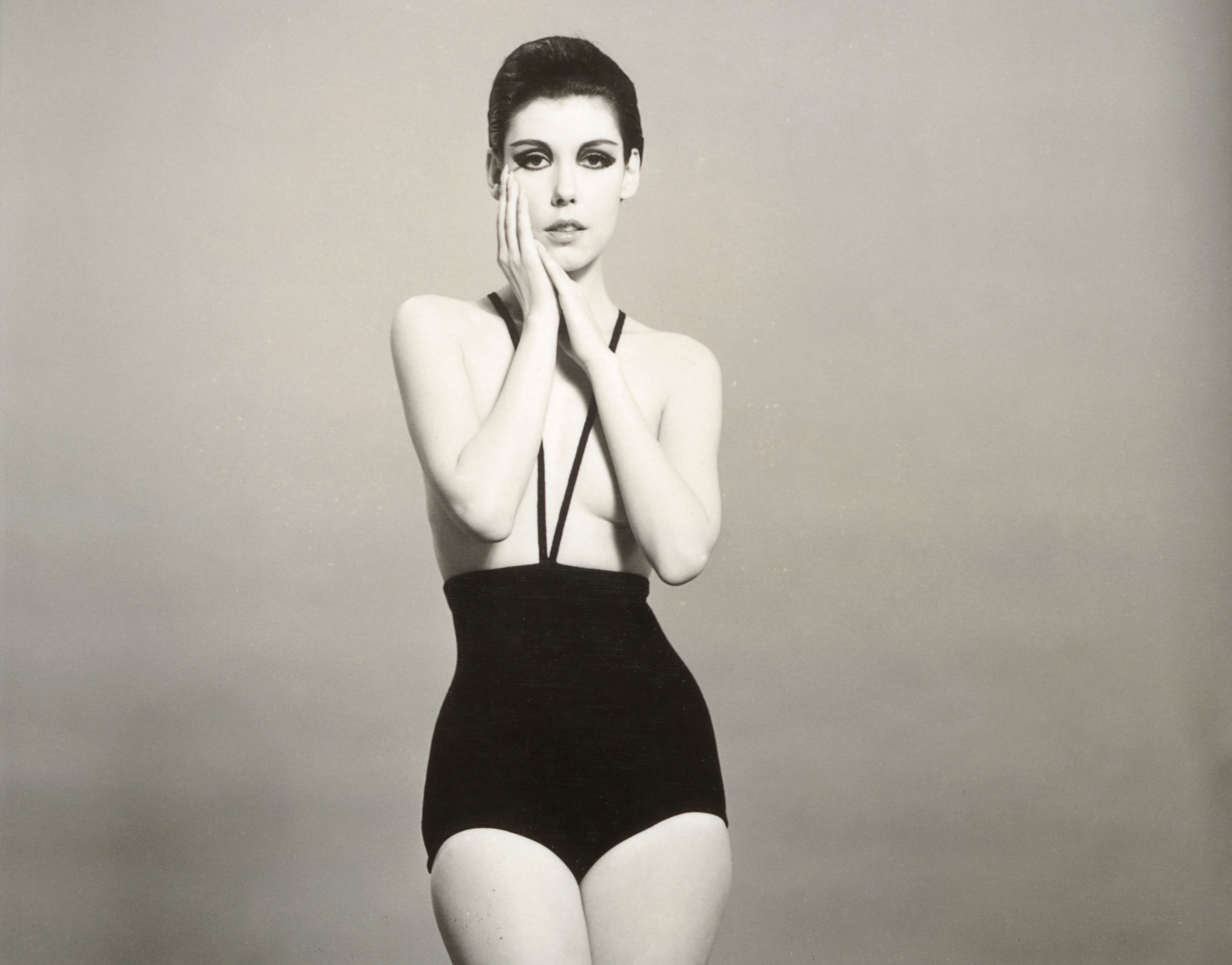
SWIMSUITS AND UNDERGARMENTS
Swimsuits and Undergarments showcases Gernreich’s knit bathing suits, the wireless “no-bra” bra, thong underwear, and the topless “monokini.” These garments, many of which remain staples of contemporary fashion, exemplify how Gernreich prioritized functionality and comfort in his designs.
IMAGE CREDIT
Peggy Moffitt modeling the topless swimsuit designed by Rudi Gernreich, 1964. Photograph © William Claxton, LLC, courtesy of Demont Photo Management & Fahey/Klein Gallery Los Angeles, with permission of the Rudi Gernreich trademark.
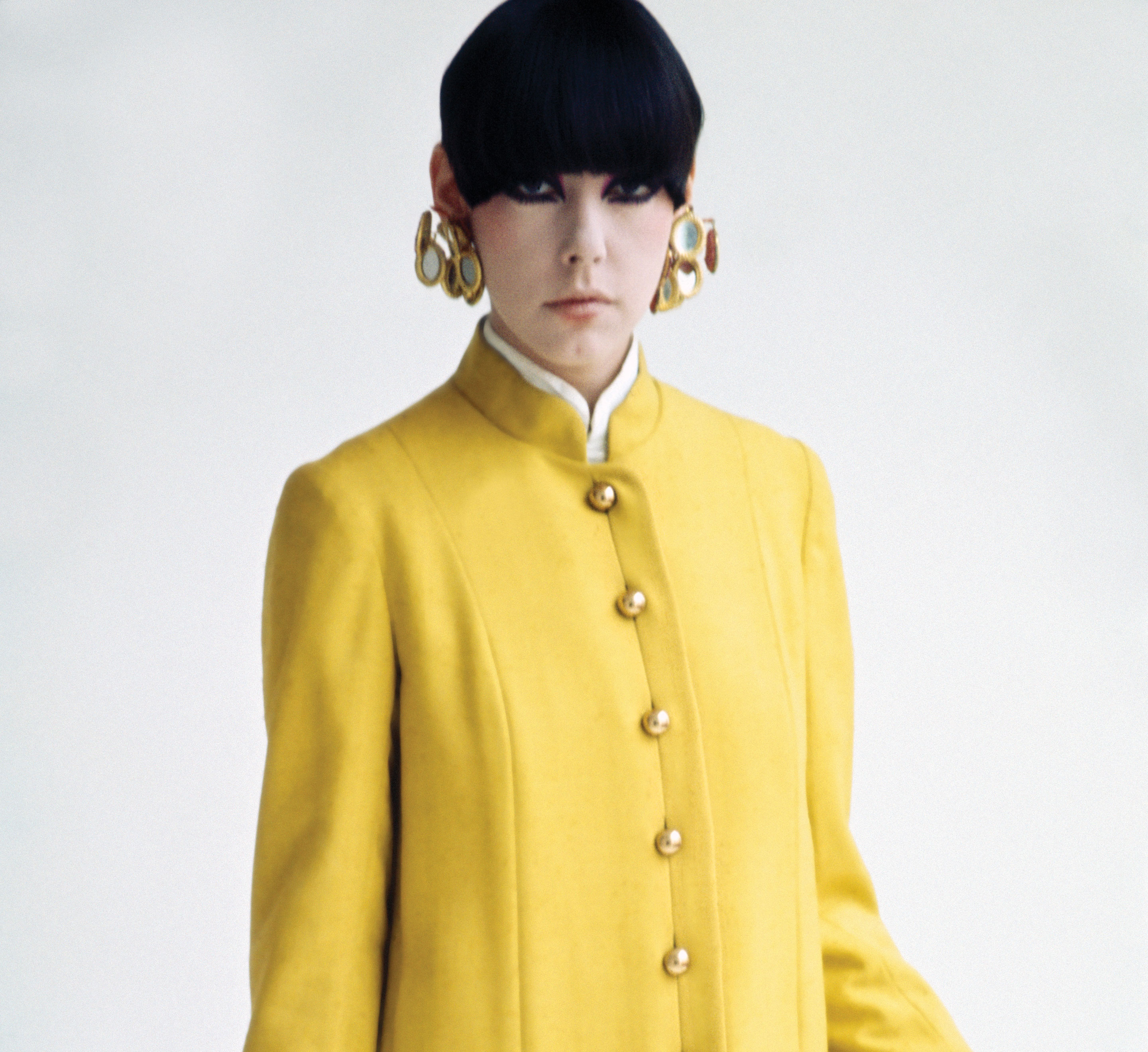
YOUTH CULTURE AND POLITICS
Youth Culture and Politics explores Gernreich’s military-inspired collection created in response to the crises of his time, particularly student protests, growing racial tensions in the United States, and armed conflicts around the world such as the Vietnam War.
IMAGE CREDIT
Peggy Moffitt in Nehru ensemble designed by Rudi Gernreich, Resort 1965 collection. Photograph © William Claxton, LLC, courtesy of Demont Photo Management & Fahey/Klein Gallery Los Angeles, with permission of the Rudi Gernreich trademark.
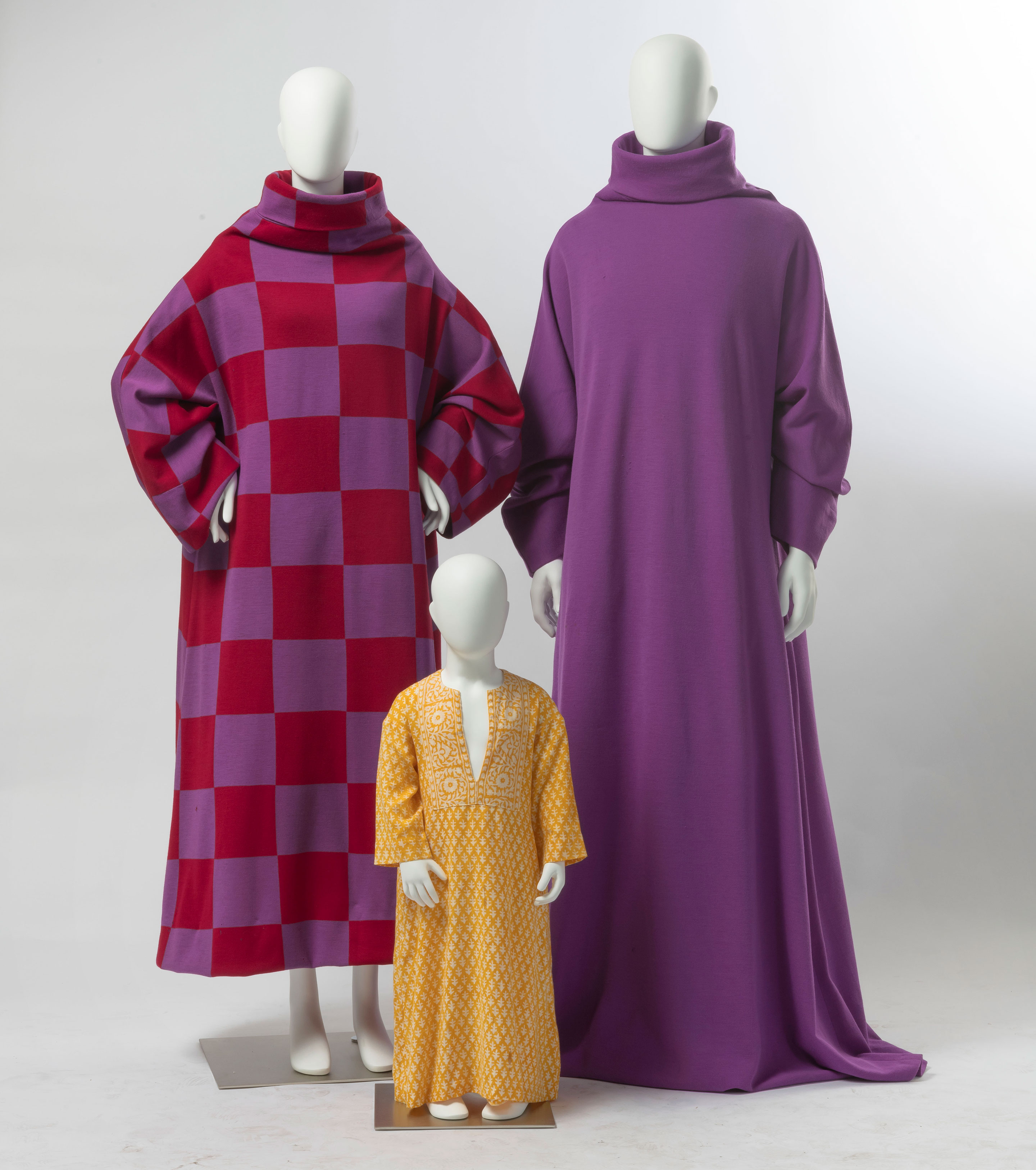
UNISEX SOLIDARITY
Unisex Solidarity features the designer’s Unisex Collection of 1970, in which he stripped away gender markers and presented garments such as caftans that could be worn interchangeably by any person.
IMAGE CREDIT
(Left) Rudi Gernreichfor Harmon Knitwear. Caftan, 1970. Wool knit. Collection of Peggy Moffitt. Photo by Robert Wedemeyer. (Center) Rudi Gernreich. Caftan, c. 1973. Printed cotton plain weave. Collection of Peggy Moffitt. Photo by Robert Wedemeyer. (Right) Rudi Gernreichfor Harmon Knitwear. Caftan, 1970. Wool knit. Collection of Peggy Moffitt. Photo by Robert Wedemeyer.

EXPERIMENTAL FASHION AND LEGACY
Finally, Experimental Fashion and Legacy illustrates how Gernreich’s cutting-edge use of sheer fabrics, leather, vinyl, dog leashes as belts, exposed zippers, and metal springs continues to influence mainstream fashion.
IMAGE CREDIT
Peggy Moffitt modeling trompe l’oeil ensemble designed by Rudi Gernreich, Resort 1971 collection Photograph © William Claxton, LLC, courtesy of Demont Photo Management & Fahey/Klein Gallery Los Angeles, with permission of the Rudi Gernreich trademark.
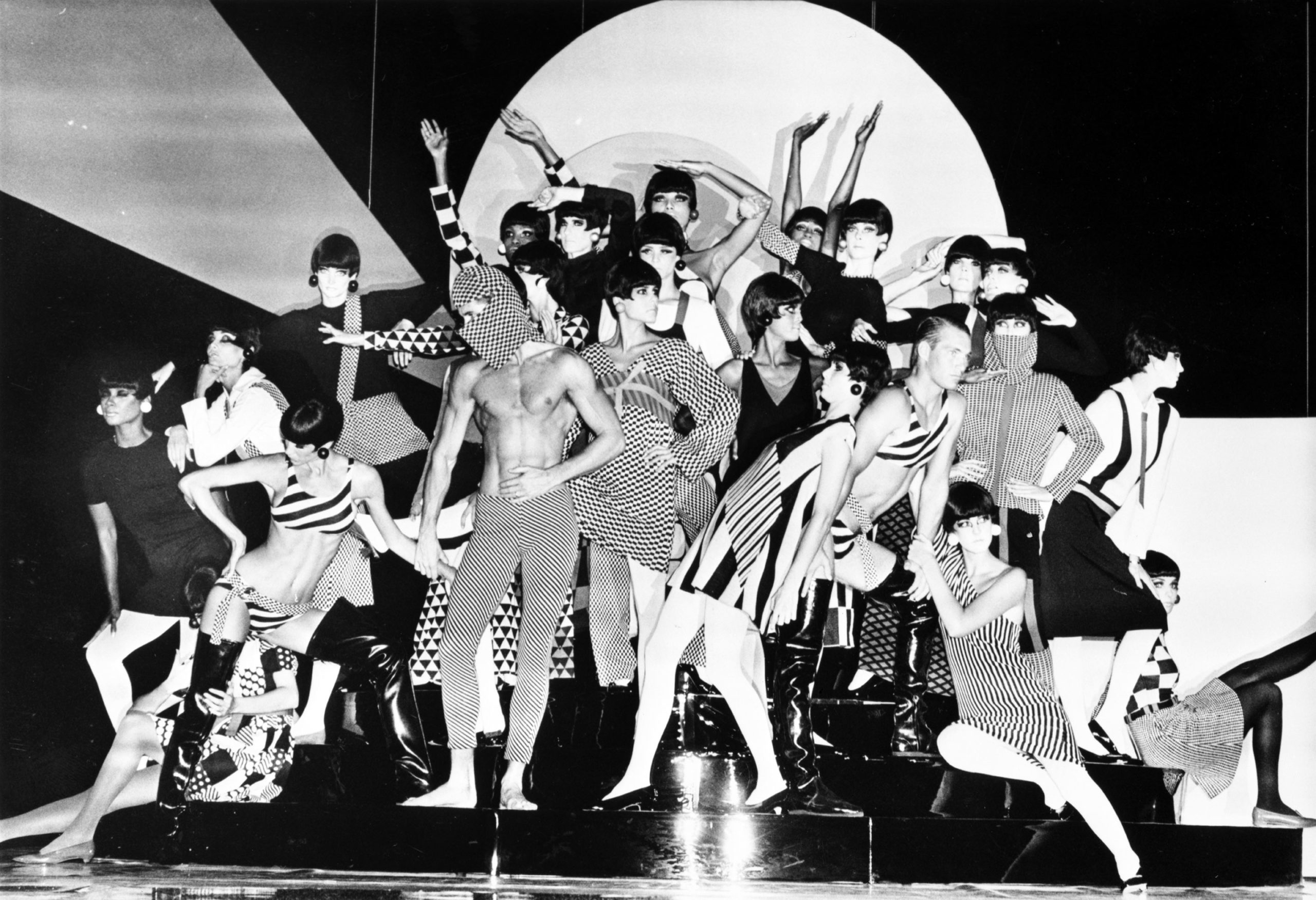
CONCEPT TO RACK
Fearless Fashion also showcases a whimsical environment titled Concept to Rack that examines the relationship between Gernreich, model and muse Peggy Moffitt, and various retailers, including LA’s Jax Boutique, for which he designed activewear. Visitors additionally enjoy newly filmed oral histories of several of Gernreich’s colleagues and friends, such as modern dancer Don Martin, fashion designer Renee Firestone, and models Barbara Flood and Léon Bing, as well as media stations that play historical footage of Gernreich fashion shows and Basic Black, widely regarded as the first fashion video and featuring Gernreich, Moffitt, and hair stylist Vidal Sassoon.
IMAGE CREDIT
Rudi Gernreich fashions at the Wiltern, 1985. Photo Collection, Los Angeles Public Library.
EXHIBITION SPONSORS
RELATED EVENTS AND PROGRAMS
RESOURCES
PRESS INFORMATION
Media Images and Credit Lines
DOWNLOADPress Releases
Phoenix Art Museum presents major fashion exhibition of gender-fluid, body-positive designs by ’60s-mod legend Rudi Gernreich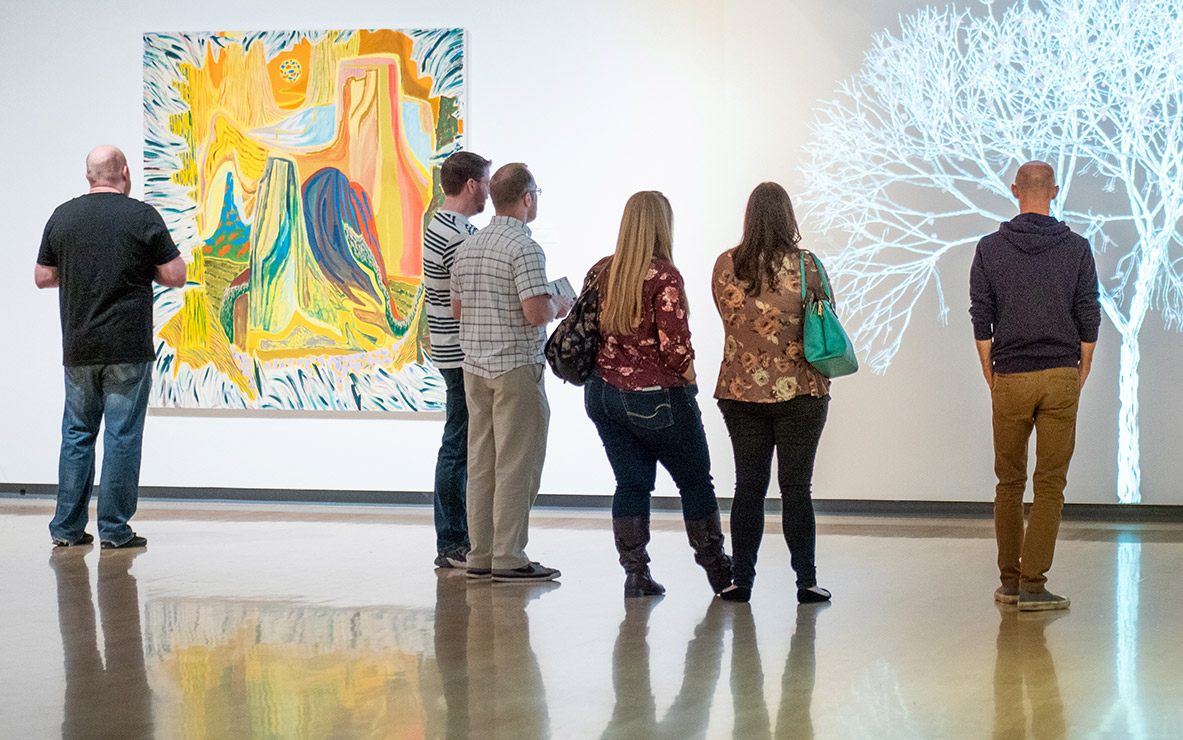
Featuring more than 20,000 objects, the collection spans the globe, bringing the world to our city, and our city to the world.
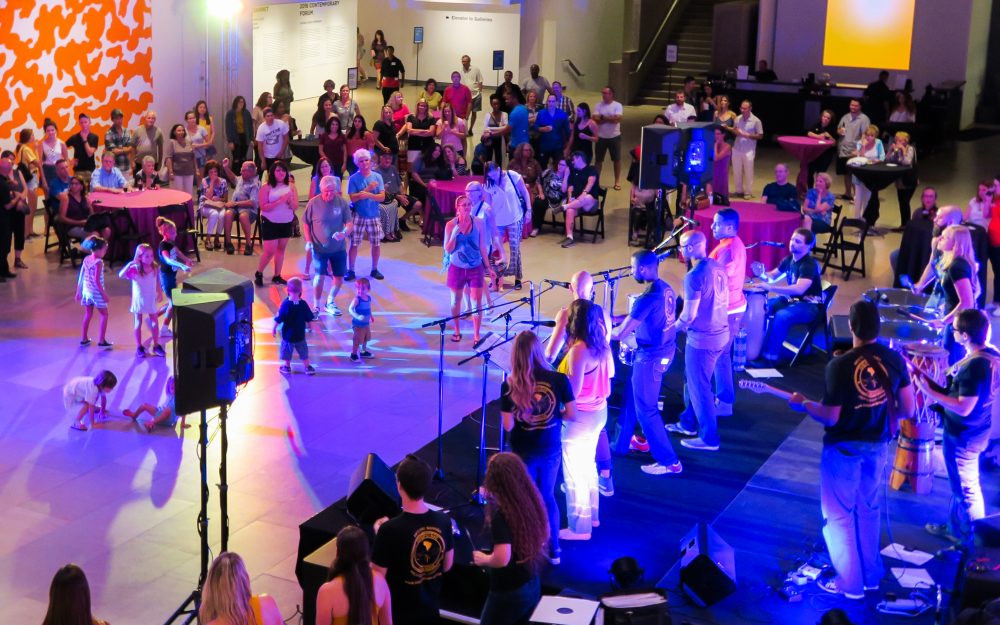
Discover a world of programs, workshops, and more, and experience your museum in a whole new way.
EXHIBITIONS
On view for a limited time, exhibitions present art from across the centuries and the globe, from iconic fashion to Old Master paintings, contemporary photography to historical objects of Asia.
MORECOLLECTIONS
Featuring more than 20,000 objects, the collection spans the globe, bringing the world to our city, and our city to the world.
MORE